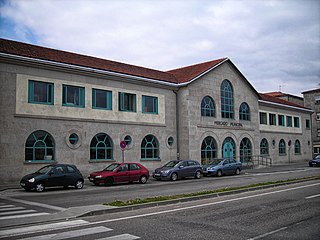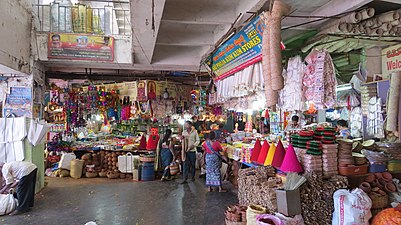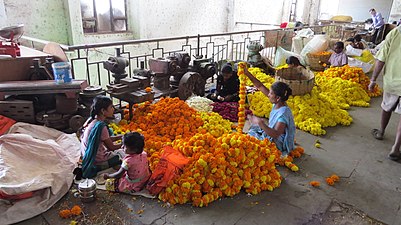
University of Visvesvaraya College of Engineering (UVCE) was established in 1917, under the name Government Engineering College, by Bharat Ratna Sir M. Visvesvaraya. It is the 5th engineering college to be established in the country and 1st in Karnataka. UVCE is one of the few technical institutions in the country that is vested with the status of a university and autonomy on the lines of IITs. It is one of the oldest technical institutions in the country, imparting technical education leading to B.Tech., B. Arch., M.Tech., M. Arch. and PhD degrees in the various disciplines of Engineering and Architecture. The college is approved by the AICTE and the Government of Karnataka. UVCE has secured an NAAC accreditation score of 3.75. UVCE, while a constituent college of Bangalore University until 2022, secured an NIRF ranking of 64. The college used to receive financial aid under the TEQIP program from the World Bank.

Mysore Medical College and Research Institute, also known as Government Medical College, Mysore is one of the oldest medical colleges in India. It is located in the heart of the city of Mysore adjacent to the city railway station. Founded in 1924 by Maharaja Krishnaraja Wadiyar IV, it is the first medical college to be established in the Karnataka region and the seventh in India. The college is affiliated to the Rajiv Gandhi University of Health Sciences, Jayanagar, Bangalore.

Chennai Mofussil Bus Terminus, officially Puratchi Thalaivar Dr. M.G.R. Bus Terminus, is a bus terminus located in Chennai, India, providing inter-state bus transport services. It is located on the 100 feet (30 m) Jawaharlal Nehru Salai in Koyambedu between SAF Games Village and the Koyambedu Vegetable Market. It is the second largest bus terminus in India as well as Asia. Chennai Metro Rail has operated a coach depot behind the bus terminus since 2015.

The Queen Victoria Building is a heritage-listed late-nineteenth-century building located at 429–481 George Street in the Sydney central business district, in the state of New South Wales, Australia. Designed by the architect George McRae, the Romanesque Revival building was constructed between 1893 and 1898 and is 30 metres (98 ft) wide by 190 metres (620 ft) long. The domes were built by Ritchie Brothers, a steel and metal company that also built trains, trams and farm equipment. The building fills a city block bounded by George, Market, York, and Druitt Streets. Designed as a marketplace, it was used for a variety of other purposes, underwent remodelling, and suffered decay until its restoration and return to its original use in the late twentieth century. The property is co-owned by the City of Sydney and Link REIT, and was added to the New South Wales State Heritage Register on 5 March 2010.

Reading Terminal Market is an enclosed public market located at 12th and Arch Streets in Center City Philadelphia, Pennsylvania. It opened originally in 1893 under the elevated train shed of the Reading Railroad Company after the city of Philadelphia advocated to move public markets from the streets into indoor facilities for both safety and sanitary reasons.

Basavanagudi is a residential and commercial locality in the Indian city of Bangalore. Basavanagudi is one of the oldest localities of Bangalore evidenced by the fact that it is home to four inscriptions, three Kannada inscriptions and one Tamil inscription and also one of the poshest areas of Bangalore. It is located in South Bangalore, along the borders of Jayanagar and Lalbagh Botanical Gardens. The name "Basavanagudi" refers to the Bull Temple, which contains a monolith statue of the Nandi Bull. The word Basava in Kannada means bull, and gudi means temple. The main commercial street in Basavanagudi is DVG Road, which is home to numerous retail businesses - several of them dating back to the 1920s and 1930s. Towards the middle of DVG Road is Gandhi Bazaar, known for its market which sells fresh flowers, fruits, and vegetables. The neighbourhood includes several historic restaurants, notably Vidyarthi Bhavan, a vegetarian restaurant which opened in 1943.

Kengeri is a western suburb of Bangalore city,located along Mysore Road.It is bordered by Nagarbhavi and Ullal to the north, Rajarajeshwari Nagar to the east,Kumbalgodu to the west and Uttarahalli to the south.

The Great Market Hall or Central Market Hall, Market Hall I is the largest and oldest indoor market in Budapest, Hungary. The idea of building such a large market hall arose from the first mayor of Budapest, Károly Kamermayer, and it was his largest investment. He retired in 1896 and participated in the opening ceremony on February 15, 1897.

Bangalore Fort began in 1537 as a mud fort. The builder was Kempe Gowda I, a vassal of the Vijaynagar Empire and the founder of Bangalore. Hyder Ali in 1761 replaced the mud fort with a stone fort and it was further improved by his son Tipu Sultan in the late 18th century. It was damaged during an Anglo-Mysore war in 1791. It still remains a good example of 18th-century military fortification. The army of the British East India Company, led by Lord Cornwallis on 21 March 1791 captured the fort in the siege of Bangalore during the Third Mysore War (1790–1792). At the time the fort was a stronghold for Tipu Sultan. Today, the fort's Delhi gate, on Krishnarajendra Road, and two bastions are the primary remains of the fort. A marble plaque commemorates the spot where the British breached fort's wall, leading to its capture. The old fort area also includes Tipu Sultan's Summer Palace, and his armoury. The fort has provided the setting for the treasure hunt in the book Riddle of the Seventh Stone.

Newport Market is a traditional Victorian indoor market, in Newport, South Wales. It is an early example of a large-span cast iron-frame building featuring a glass-filled barrel roof.

Bengaluru Pete is the area of Bangalore city which was established by Kempegowda I in 1537 with roads laid out in the cardinal directions, and entrance gates at the end of each road. Kempegowda also termed the Pete he built as his "gandu bhoomi" or "Land of Heroes". Pete forms a well–defined body of markets which were associated with various trades and professions of the populace in the locality markets and given the names of trades pursued in such markets. The well known markets are the Tharagupete–market for grains, the Balepete – for Bangles and musical instruments, the Chikkapete and the Nagarthpete for textile trade, the Ballapurpete and the Ganigarapete market where oil is extracted by people of the Ganiga community, the Tigalarapete–flower market of gardeners, the Cubbonpete – textile manufacture by people of the Devanga community.

Sir K. P. Puttanna Chetty Town Hall, locally commonly referred to as Bangalore Town Hall, is a neoclassical municipal building in Bangalore, India, named after the philanthropist and former president of Bangalore City Municipality, Sir K.P Puttanna Chetty.

The siege of Bangalore was a siege of the town and fortifications of Bangalore during the Third Anglo-Mysore War by forces of the British East India Company, led by Charles, Earl Cornwallis against a Mysorean garrison, while Tipu Sultan, Mysore's ruler, harried the camps and positions of the besiegers. Arriving before the town on 5 February 1791, Cornwallis captured the town by assault on 7 February, and after six weeks of siege, stormed the fortress on 21 March.

Garuda Mall is the premier shopping mall in the city of Bangalore, India, which is also home to the city's second oldest Shoppers Stop branch, and the oldest one in the city which is attached to a mall. It is situated on Magrath Road at the heart of the central business district in Bangalore, near Brigade Road. The mall has opened another branch in the Heritage City, Mysore near K. R. Circle. Another branch in Kochi with French cuisine and heritage.

Mahatma Phule Mandai is the biggest retail vegetable market in the city of Pune, India. The market is housed in an iconic building from the British colonial era in the Shukrawar Peth locality in the center of the city.

Mayo Hall is a government building located in the center of Bangalore. It was built to honor the memory of Lord Mayo, the 4th Viceroy of India. It offers a panoramic view of the city's Parade Grounds and Ulsoor Lake on one side, and the Bangalore Race Course and Brigade Grounds on the south.

The Bandar Utama station is a mass rapid transit (MRT) station serving the suburb of Bandar Utama in Petaling Jaya, Selangor, Malaysia as well as parts of Taman Tun Dr Ismail, Kuala Lumpur which lie across the Damansara–Puchong Expressway from the station.

Mayestik Market is a modern traditional market at Kebayoran Baru, in Jakarta, Indonesia. Drugs and cosmetics, jewelry, clothing and tailors, vegetables and fruits, meat and fish, book store, sports equipment, almost everything needed for daily life are available in this market.

The Central Market of Pontevedra is a covered market located in Pontevedra, Spain. It is located at the north-eastern edge of the historic centre, close to the Burgo Bridge. It overlooks the banks of the Lérez river and was inaugurated in 1948.

Janopakari Doddanna Setty, (1840–1921), was an Indian merchant and philanthropist from Bangalore, Mysore State, British India. He is known for starting the Sri Lakshmi Narasimha Institution for free education to help poor students in 1906, and he also built a public function hall, popularly called "Doddanna Hall", which used to host cultural and public activities in 1905, and later converted into Paramount Talkies.



































